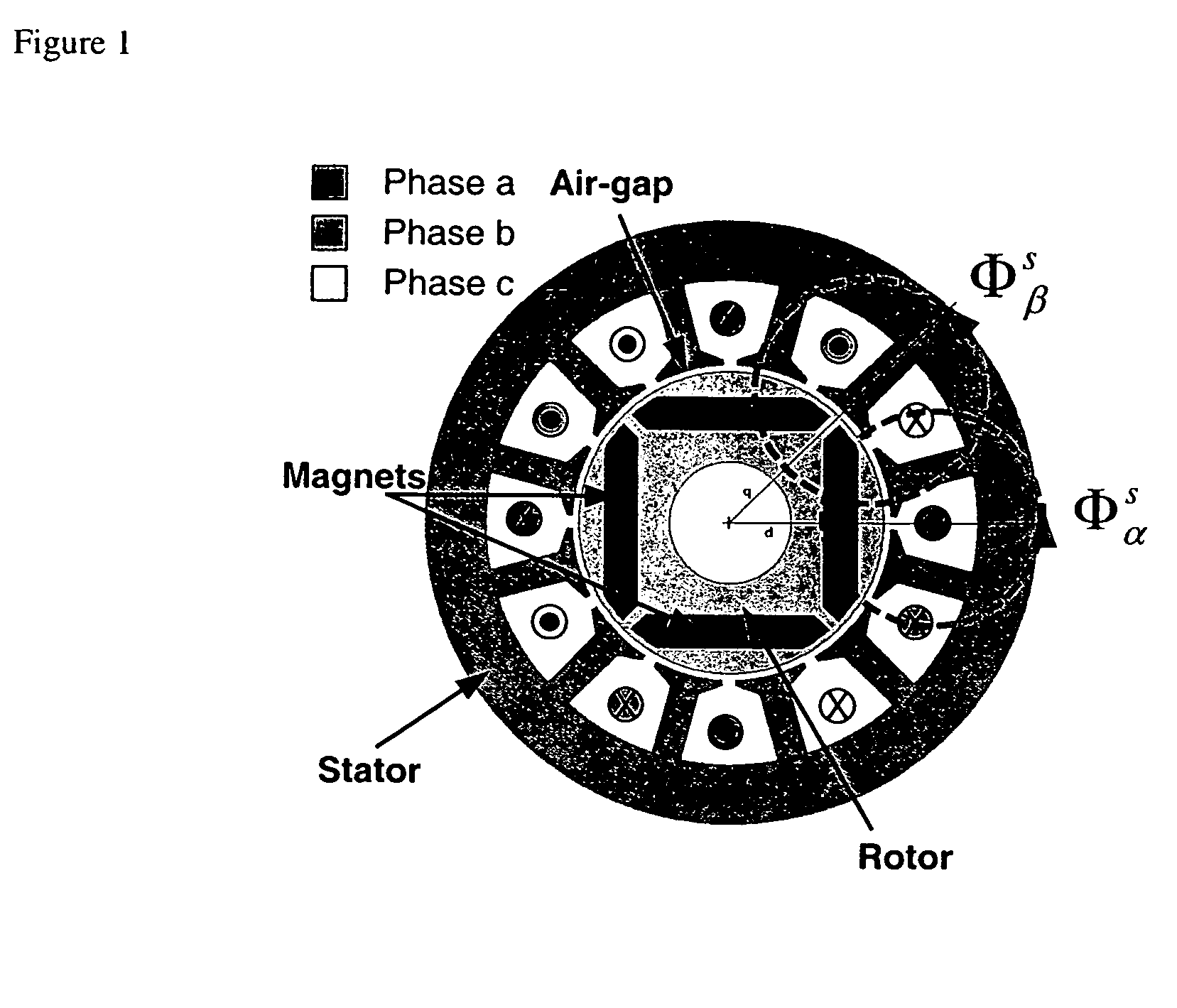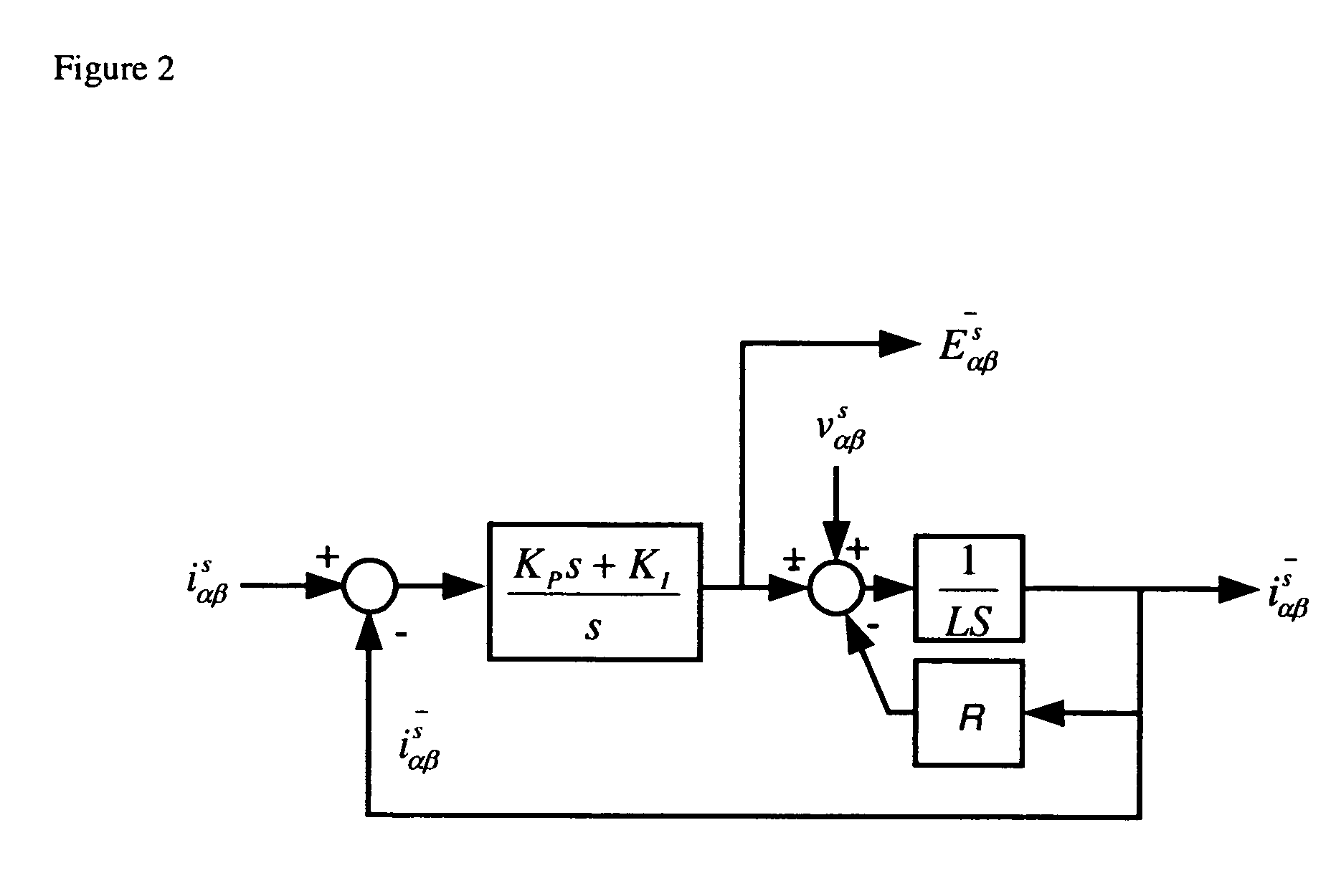Position sensorless drive for permanent magnet synchronous motors
a synchronous motor and sensorless technology, applied in the direction of motor/generator/converter stopper, dynamo-electric gear control, dynamo-electric converter control, etc., can solve the problem of small position estimation error obtained from fusion algorithm, in the majority of cases
- Summary
- Abstract
- Description
- Claims
- Application Information
AI Technical Summary
Benefits of technology
Problems solved by technology
Method used
Image
Examples
Embodiment Construction
[0023] A. Mathematical Model of Motor
[0024] A PM motor constructed with saliency will exhibit a constant difference ΔLr between its stator inductance L observed along the d-axis and that observed along the q-axis of the rotating reference frame. In the stationary reference frame, this difference will manifest itself as a variation in L that is a function of the rotor position. This is the case for the IPM motor shown in FIG. 1, which exhibits saliency. For this IPM motor, it is evident that the flux Φαs sees less reluctance than Φβs because it flows mostly along the length of the low reluctance magnet material. The inductance Lα will therefore differ from Lβ.
[0025] This inductance variation appears in the differential equations that govern the electrical dynamics of the motor. These are given by (1) and (2), in the rotating reference frame. Vdr=R idr+L ⅆⅆtidr-L ωmiqr(1)Vqr=R iqr+L ⅆⅆtiqr-Δ Lrⅆⅆtiqr+L ωmidr+λrωm(2)
Where: [0026] Vdr and Vqr are the direct and ...
PUM
 Login to View More
Login to View More Abstract
Description
Claims
Application Information
 Login to View More
Login to View More - R&D
- Intellectual Property
- Life Sciences
- Materials
- Tech Scout
- Unparalleled Data Quality
- Higher Quality Content
- 60% Fewer Hallucinations
Browse by: Latest US Patents, China's latest patents, Technical Efficacy Thesaurus, Application Domain, Technology Topic, Popular Technical Reports.
© 2025 PatSnap. All rights reserved.Legal|Privacy policy|Modern Slavery Act Transparency Statement|Sitemap|About US| Contact US: help@patsnap.com



